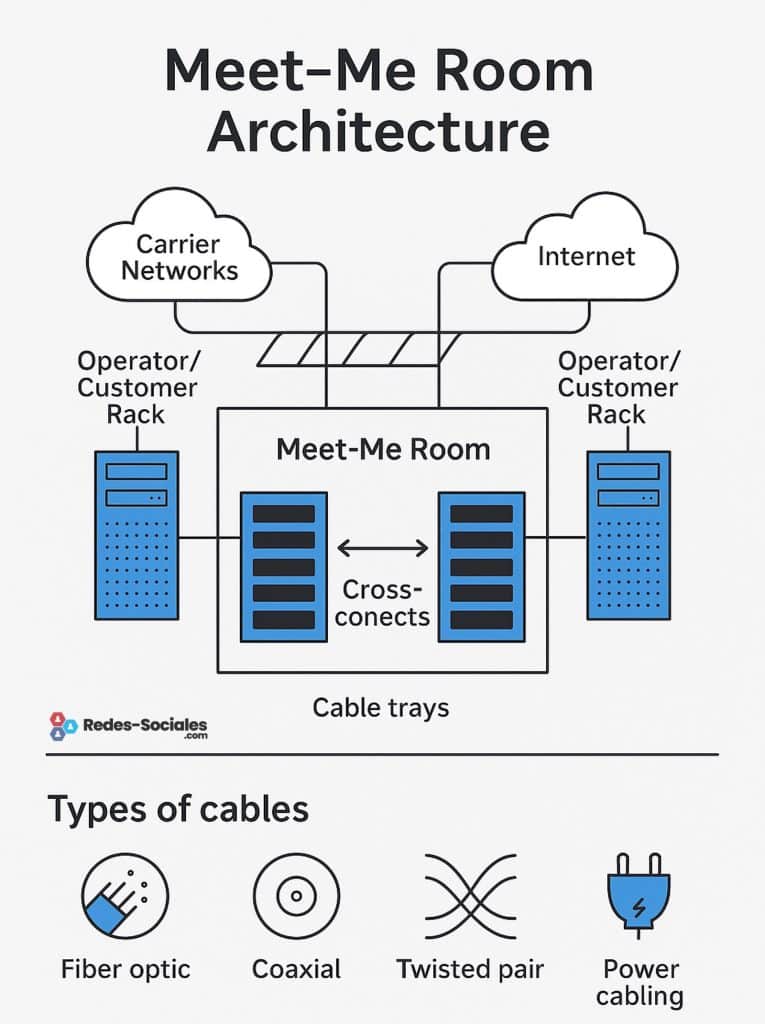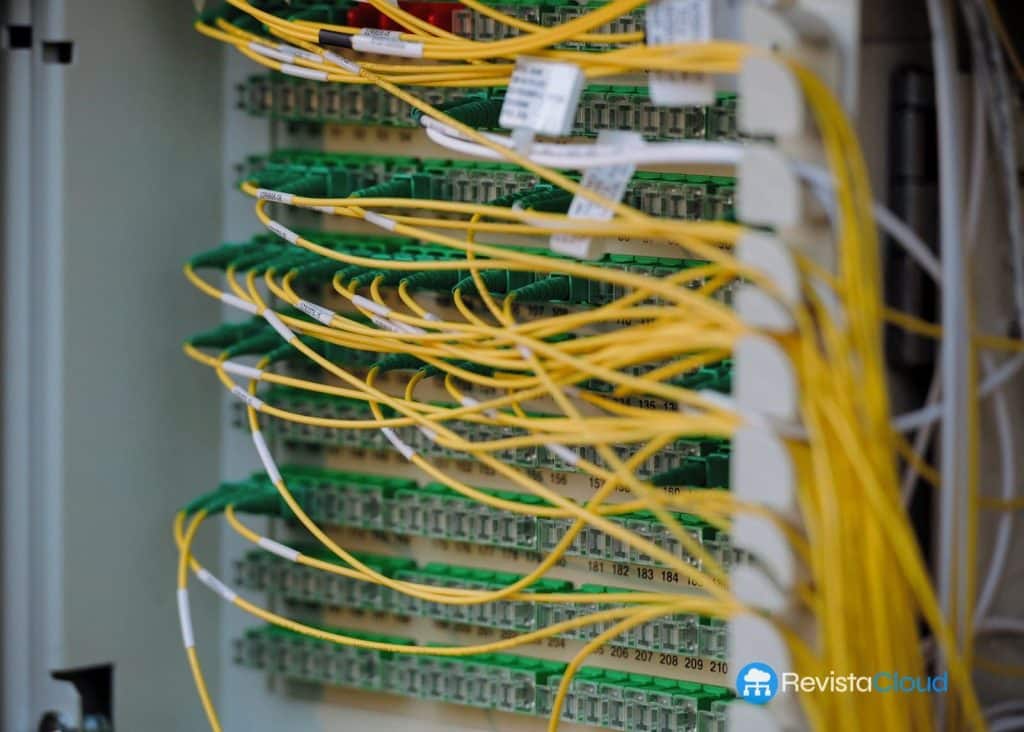In the highly interconnected landscape of global data infrastructure, the Meet-Me Room (MMR) plays a foundational role. It is a dedicated space within a data center where carriers, cloud providers, content delivery networks (CDNs), and enterprise customers physically interconnect their networks. Far more than a simple junction point, the MMR is the convergence hub that enables low-latency, secure, and carrier-neutral connectivity—critical for the performance and resilience of digital services.
What Is a Meet-Me Room?
A Meet-Me Room is a physically secured, environmentally controlled room within a colocation or carrier-neutral facility that enables direct cross-connects between customers, service providers, and networks. Rather than routing traffic through external circuits or long-haul links, clients in the same facility can interconnect at extremely low latency, minimal cost, and with high operational control.
MMRs are commonly used for:
- Carrier peering
- Cloud on-ramp access
- ISP interconnectivity
- Financial services interlinks
- Hybrid cloud and edge compute backhauls
MMR Technical Architecture
A well-designed MMR ensures performance, redundancy, and flexibility. Key architectural elements include:
1. High-Density Optical Distribution Frames (ODFs)
Used to terminate and manage fiber optic cabling. These provide patching flexibility and facilitate maintenance.
2. Copper Patch Panels
For UTP/STP cable cross-connects—still widely used in enterprise networking.
3. Cross-Connect Infrastructure
Enables physical layer connections between participants. Patch cords link client cabinets to others or to telecom provider racks via the MMR.
4. Redundant Power and Cooling
Dual power feeds, precision cooling, environmental sensors, and cable management systems ensure uptime and physical reliability.
5. Access Control and Monitoring
MMRs are highly restricted areas with biometrics, logging systems, CCTV surveillance, and tamper alarms to ensure secure access and traceability.
Types of Cabling in MMRs
Interconnection in the MMR relies on various types of cabling, depending on bandwidth, latency, and cost considerations:
a) Single-Mode Fiber (OS2)
- Used for long-distance and high-bandwidth connections.
- Ideal for cross-connects between carriers, cloud gateways, and IXPs.
- Supports 10G/40G/100G/400G/800G+ links.
b) Multi-Mode Fiber (OM3 / OM4 / OM5)
- Used for shorter-distance links (<150m).
- Lower cost optics, typically used within the same facility for 10G to 100G connections.
c) Direct Attach Copper (DAC) & Active Optical Cable (AOC)
- DAC (passive twinax) and AOC are pre-terminated, low-latency solutions for short-reach switch interconnects.
- Used in top-of-rack to end-of-row architectures for 10/25/50/100G Ethernet.
d) Shielded & Unshielded Twisted Pair (Cat6A, Cat7, Cat8)
- Legacy and current support for Ethernet up to 40G (Cat8).
- Used in environments where copper is still preferred or where existing infrastructure is reused.
e) Coaxial Cabling (RG6, RG11)
- Rare today but still deployed in media and broadcast-related services that require RF transmission.
Benefits of a Meet-Me Room
- Ultra-Low Latency: Eliminates external hops by enabling direct connectivity between participants.
- Cost Efficiency: Avoids the expense of metro loop connections or IP transit for internal routing.
- Carrier Neutrality: Allows colocated customers to choose from multiple providers.
- High Scalability: Easily scalable through cross-connects as bandwidth needs grow.
- Security and Compliance: Physical separation of clients and restricted access ensures network integrity and auditability.

Advanced Use Cases
- Private Peering for Hyperscalers: GCP, AWS, Azure, Oracle Cloud FastConnect, and others often interconnect directly via MMRs.
- Financial Institutions: Traders and fintechs leverage MMRs for sub-millisecond latencies to exchanges and liquidity providers.
- Content Providers: CDN nodes use MMRs to offload traffic into telecom backbones close to end users.
- IXP Integration: Many MMRs include or peer directly with Internet Exchange Points (e.g., DE-CIX, AMS-IX, LINX).
Emerging Trends and Technologies in MMRs
As demand for high-performance connectivity continues to surge due to edge computing, AI/ML workloads, and distributed cloud infrastructure, MMRs are evolving:
1. 800G and 1.6T Optical Links
- The latest MMRs are being built with support for next-gen optical standards, facilitating ultra-dense and high-throughput interconnects.
2. Cross-Connect Automation
- Software-Defined Interconnection (SD-IX) enables orchestration of virtual cross-connects across hybrid, multi-site environments.
3. Virtual MMRs
- Logical interconnection points where routing is abstracted via SDN/NFV, minimizing physical cabling changes and allowing dynamic provisioning.
4. Liquid-Cooled Infrastructure
- As AI and GPU-intensive deployments grow, some MMRs are now engineered with cold plate or immersion cooling to support dense connectivity fabrics.
Conclusion
The Meet-Me Room is no longer just a passive interconnection zone—it’s an active, strategic layer in modern data center architecture. Its proper design and operation are vital for delivering latency-sensitive, scalable, and carrier-diverse services. For data center operators and clients alike, a high-performance MMR is synonymous with competitive advantage in an increasingly interconnected digital world.

